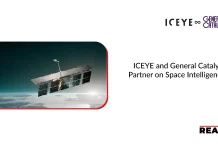The following announcement is being issued by Universities Space Research Association: Molecular clouds — clumps of gas and dust in space, where molecules form — make up the densest regions of the Milky Way, but how they assemble is largely unknown.
A recent study, published in Nature Astronomy, used data from the Stratospheric Observatory for Infrared Astronomy (SOFIA)’s upGREAT instrument to observe ionized carbon emission from molecular clouds in the Cygnus X region, one of the most massive star formation regions in the Milky Way. The astronomers, led by Nicola Schneider, a researcher at the University of Cologne in Germany, found areas of diffuse gas surrounding two molecular clouds are colliding very rapidly, creating a dense region in which new stars can form. This study provides the first evidence that ionized carbon can unveil interactions between molecular clouds.
“Before this, there was a lot of uncertainty and debate on the timescale of cloud formation, because it is extremely difficult to observe,” said Lars Bonne, a postdoctoral research associate at SOFIA and author on the recent paper. “This is direct evidence of how it’s actually going: It’s fast!”
Also Read: NASA Selects 12 Companies to Collaborate on Key Technology Development
For decades, most processes in the interstellar medium were thought to take place on timescales of around 10 million years or more, but this high-velocity flow is leading to materials assembling in only about 1.2 million years — fast, as Bonne said.
Previous studies have shown that a very similar process is also at work in low-mass clouds. Coupled with these previous findings, this first observation of cloud collision in such a massive region helps complete the picture. Together, the studies indicate a degree of universality: Both smaller and more major cloud collision events that lead to star formation are now known to be quick.
This study also provides the first evidence that ionized carbon can unveil the interactions between molecular clouds. The group used data from SOFIA‘s FEEDBACK program, which created large maps of ionized carbon in the Milky Way’s clouds. Schneider, Bonne, and their collaborators plan to continue to explore the FEEDBACK data to see if they can find similar processes occurring in other giant molecular clouds.
SOURCE: PR Newswire




